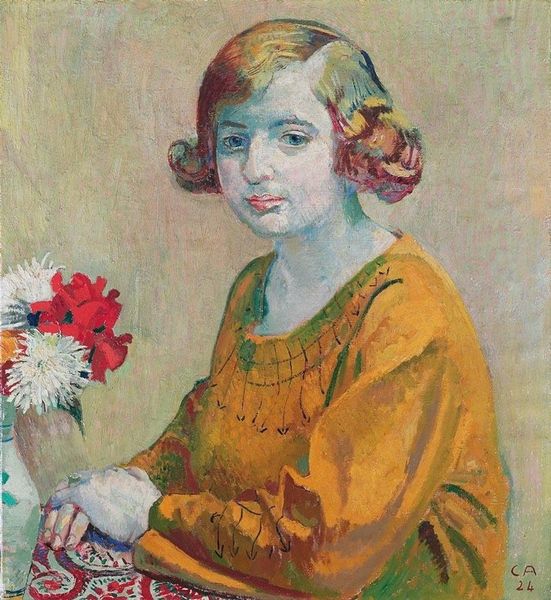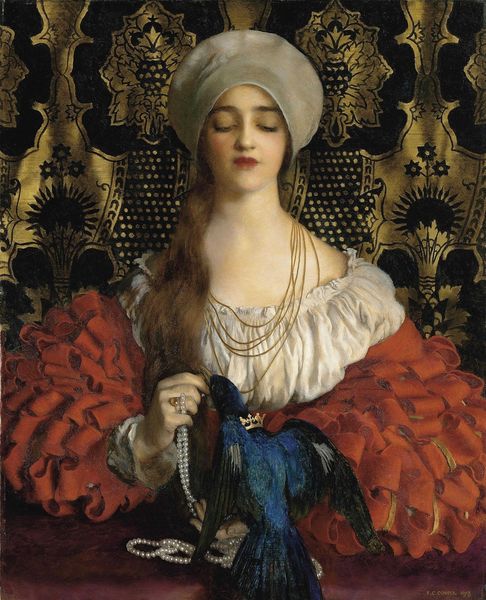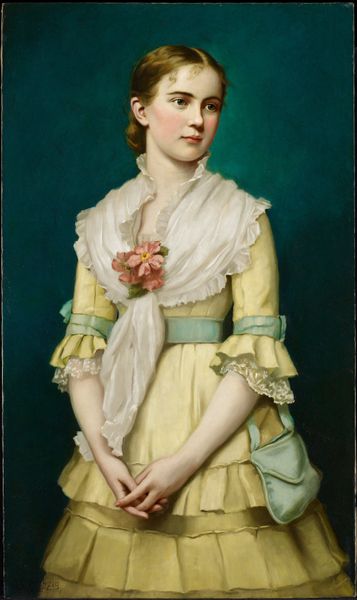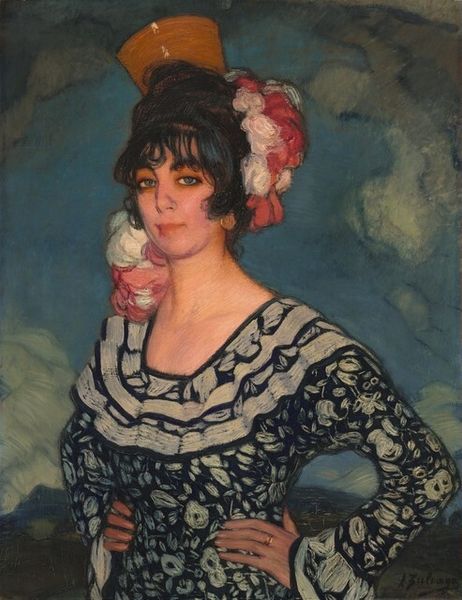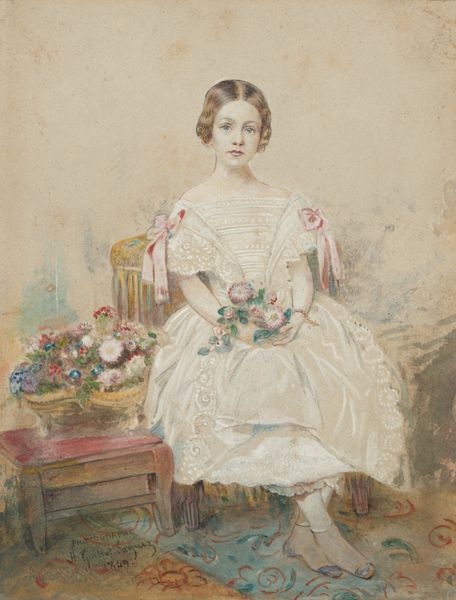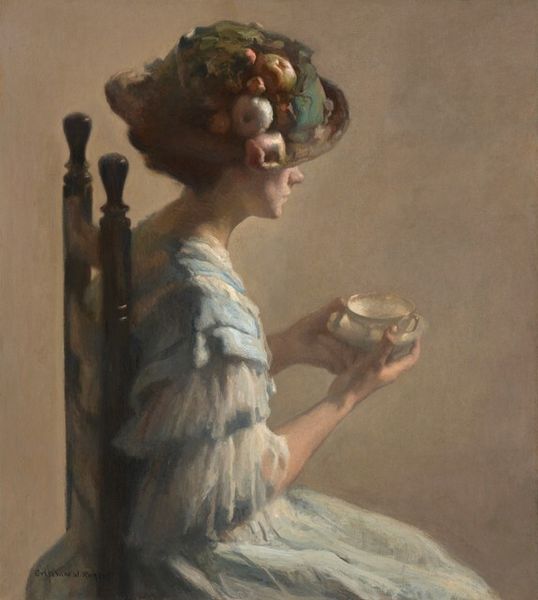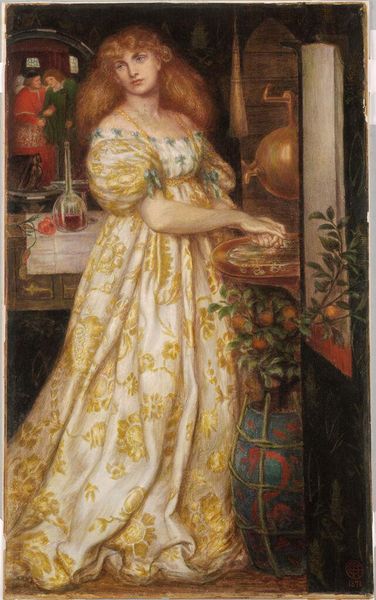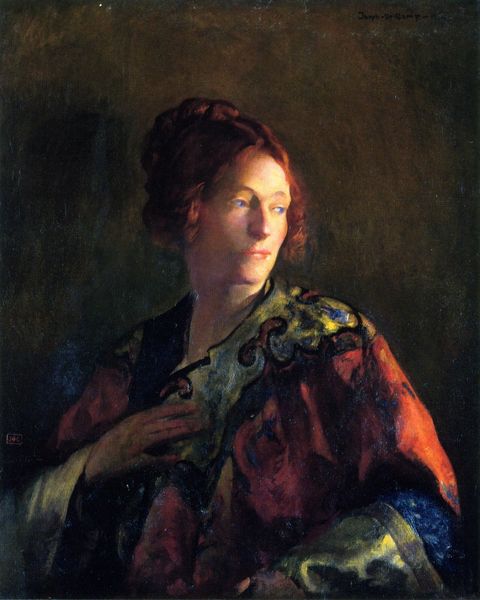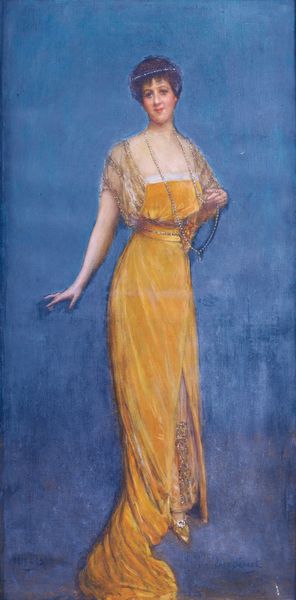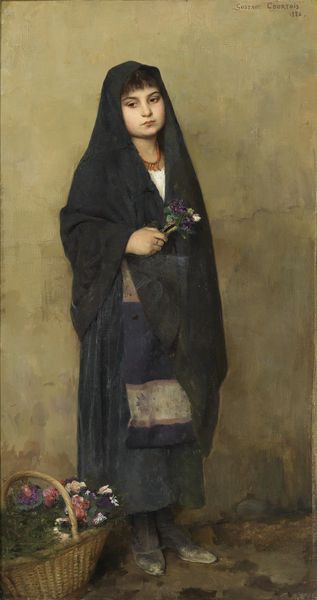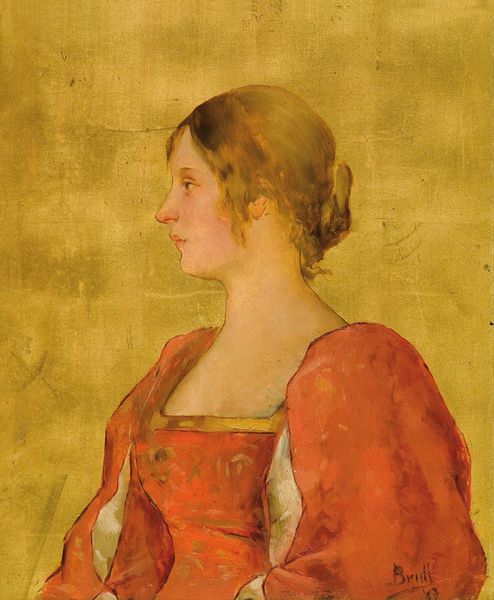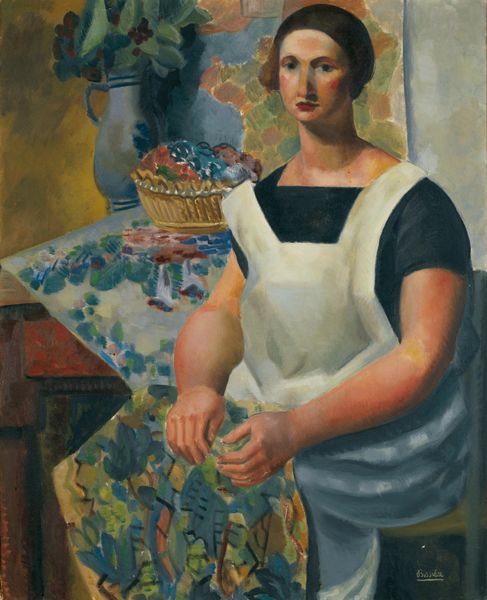
Copyright: Frank Cadogan Cowper,Fair Use
Curator: The radiant shimmer really strikes me – an almost overwhelming sensation of opulence. Editor: That's an excellent observation. We're looking at "The Golden Bowl," an oil painting crafted in 1956 by Frank Cadogan Cowper, a noted figure of the Pre-Raphaelite movement. It certainly exudes wealth. Curator: The drape of her garment, for instance, the sheen, speaks to the availability and the means of crafting or acquiring luxury goods and to labor exploitation behind it, probably. Then this central gold vessel adds an immediate air of importance. But who produced it? The context for luxury at midcentury seems relevant here. Editor: Indeed. Cowper, a post-Victorian artist working well into the 20th century, frequently tapped into historical narratives, presenting them in ways that often reflected contemporary ideals. The Pre-Raphaelites often drew inspiration from the medieval world and early Renaissance art, a rejection of industrialization, or perhaps just its ills. How does Cowper situate himself socially via the cultural capital deployed in these images? Curator: Well, it also raises questions about authenticity in art. The “realism” presented masks how Cowper’s studio operated and how this impacted the materials that composed the work. Were cheaper options used or adapted in the pursuit of mimicking luxury materials? Editor: That’s a strong point, and in contrast with, say, the Arts and Crafts movement. Her expression, though, hints at something deeper than mere display, and its public interpretation. The symbolism is undeniable, connecting her to a visual lineage from medieval madonnas to representations of wealth and status within aristocratic social circles. Curator: Do you think there’s also a connection here to colonialist consumption? The painting reminds me of Dutch still-lifes that emphasize material from newly colonized places, from precious metals and glasswork to sugar, exotic spices, fruits. There is a potential visual metaphor connecting her ownership to an active system of inequity that the art elides. Editor: Certainly. It’s difficult to overlook the potential connections to global economic imbalances represented here in allegory. The way materials come together—paint, fabric, metal—forms the complex material and political expression of its age. Thanks for offering your insightful and incisive points. Curator: Of course. My pleasure. This lens makes me reconsider everything.
Comments
No comments
Be the first to comment and join the conversation on the ultimate creative platform.
